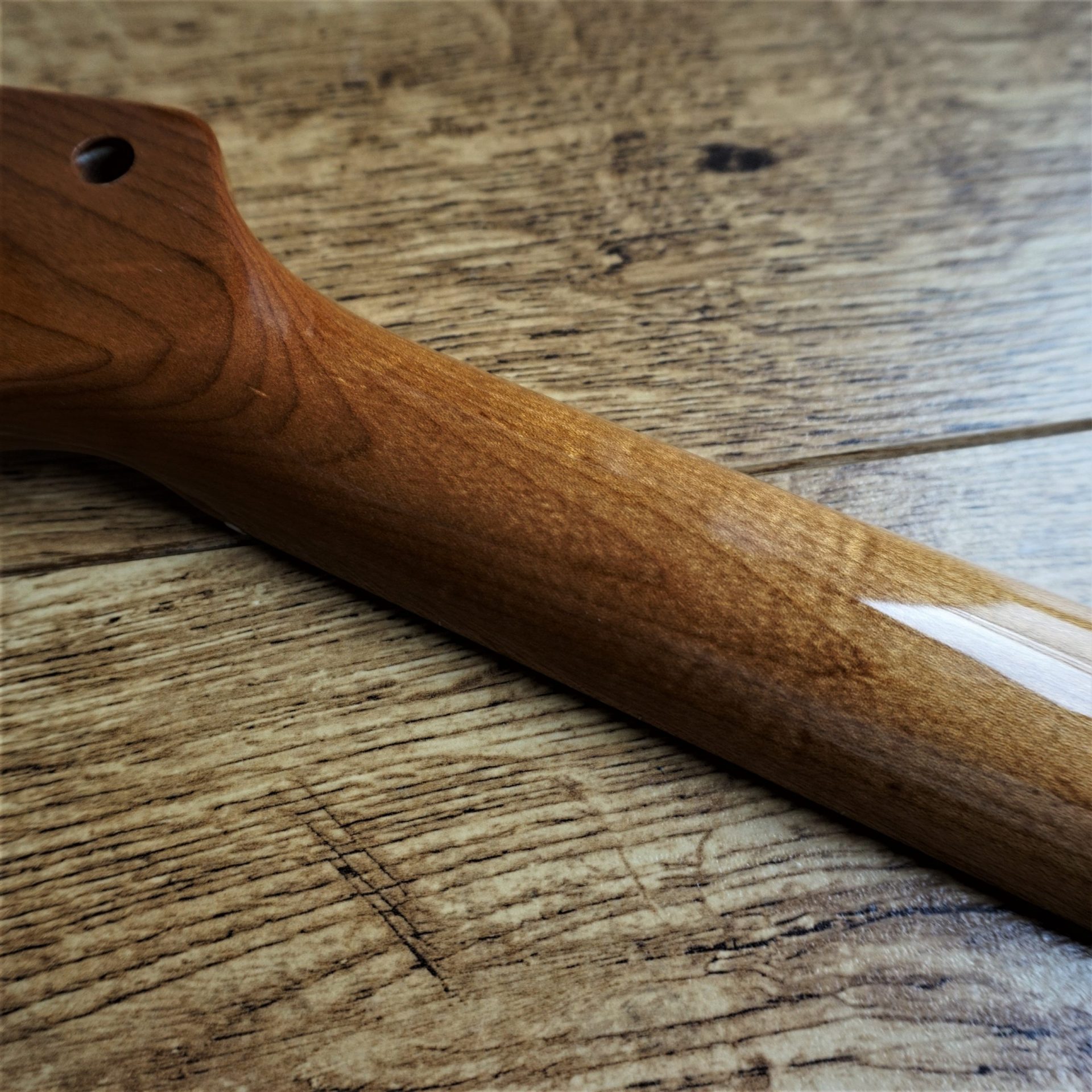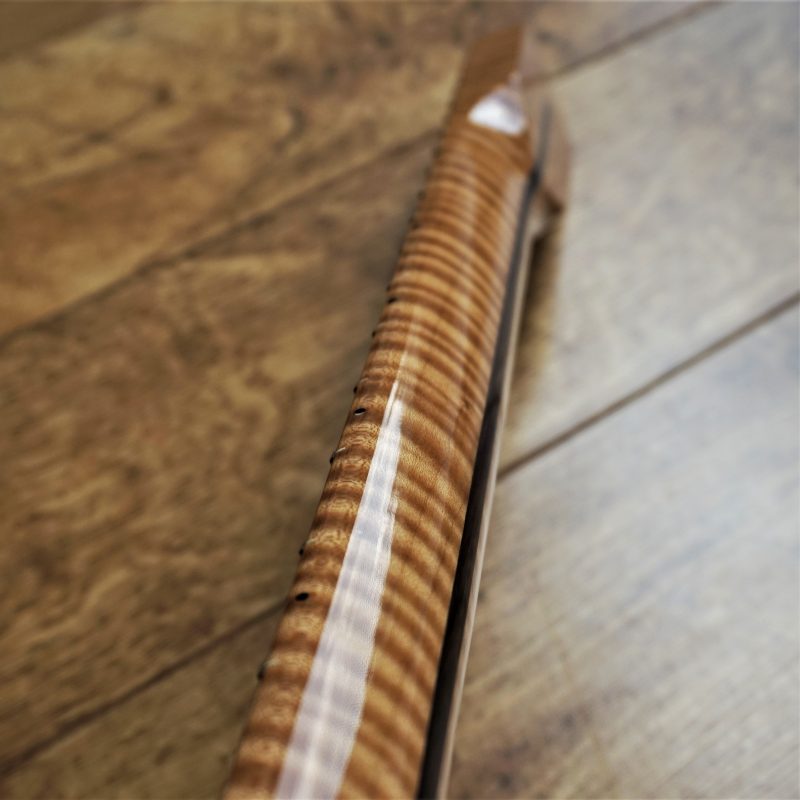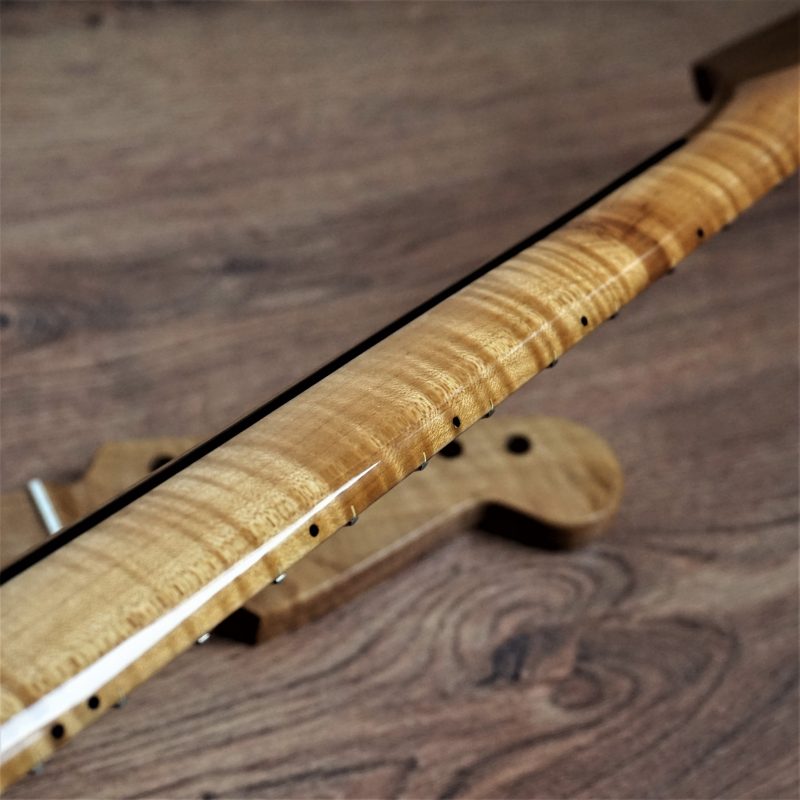Roasted Maple Necks: Everything You Need to Know
by Richard Norton 10/06/2021
Roasted Maple has seen rapid growth in popularity over recent years, with more and more players realising the benefits of a roasted maple guitar neck. Selecting the correct material for your project is one of the most important choices you can make. In this article we are going to examine the process behind roasted maple and why it is used in high-end guitars.
What is Roasted Maple?
Roasted, Baked, Torrefied and Caramelised maple are all words you may have heard associated with guitar necks. These words all describe maple wood that has undergone the same thermal treatment process. In simple terms, the process involves heating the wood to remove any moisture, oils and sugar, creating a more stable structure. As a result, the wood is much less vulnerable to temperature and humidity changes, as well as other improvements that benefit guitar players, but we’ll get to that later.
This process is achieved by thermally treating the wood in a roasting kiln. The temperature of which is controlled very carefully to slowly heat the wood and remove any moisture and impurities. This kiln is kept completely oxygen-free so that the wood does not combust, very similar to how charcoal is made. As you may have guessed, this is where the words “Roasted” and “Baked” originate from.
During this process, the wood darkens due to a chemical reaction between the oils and sugar content, with the wood becoming a darker colour the longer it is roasted. This colour change happens throughout the wood. The key here is to roast the maple for the right amount of time, too much and it will become charcoal, too little and the wood will still contain impurities. You can often tell you are holding a piece of roasted maple due to its unique odour; sweet, smoky and caramel.
Leading luthier in torrefied maple construction Dana Bourgeois spoke to Reverb.com about the science behind torrefaction. Bourgeois details why torrefaction is necessary, “you need to think about what happens to the wood over time … Freshly cut wood is mostly made of cellulose with lignin, which is a particular type of resin that holds the cellulose together. It has a fairly large content of volatiles – pitches, sugars, oils, and other chemicals that are by-products of a living tree. It also has considerable water content.”
“Over decades of air-drying, these volatiles will oxidize [combine with oxygen], gas off and mineralize. The slow chemical reaction emits a gas and leaves a mineral residue. The lignin also sets like a glue, holding the cellulose together.” Bourgeois describes how torrefaction is a process of quickly seasoning the wood in the same way that it would naturally over decades. “All these things happen naturally, but it takes decades of exposure to air for wood to fully cure. Humidification slows this down. Torrefaction speeds up that process. It changes the chemical content of the wood to make it resemble what it would be decades from now … When wood is fully cured and volatiles are fully oxidized, it becomes a better material for musical instruments.”
If you want to know more, you can read all of what Dana Bourgeois has to say here.
So, what does this mean for Guitar players?
The properties achieved from the torrefaction process described above gives us a perfect material for guitar building, more specifically, guitar necks. Since the torrefaction makes the maple much more stable, the neck will not swell or contract with temperature and humidity changes, meaning the wood won’t warp and become damaged over time. An added benefit of this is that the guitar will maintain its tune. If you have changed your standard maple neck for a roasted maple neck you will notice how little you will have to tune it. This also means the guitar will maintain its setup, with no need for constant truss rod adjustments.
Since baked maple is technically a quick way of ‘ageing’ the wood, another benefit of baked maple is that it produces a more vintage tone. The idea is that changing the properties of the maple to that of a 40 or 50-year-old piece of maple will create similar tonal qualities. These qualities include an improved tonal response due to the increased resonance, as water and oils in unroasted maple dampen the tone.
Last but not least, roasted maple looks great, with the appearance becoming a dark, golden brown walnut colour. This also helps flame maple to really pop out, giving a unique appearance.
Conclusion
Roasted Maple is a treatment process that improves wood properties in ways that benefit guitar players. There’s really no reason to not use a roasted maple neck if it fits the style of your build!
Roasted maple is becoming increasingly common within guitar manufacturing, but is still largely unknown for many players, and you could be missing a trick. A roasted maple neck is an easy and great way to improve your guitar.
At Guitar Anatomy, one of our specialities is Roasted Maple necks. Since we get so many questions about them, I thought I’d write this article to try and pass along information about our roasting process and why we do it. Hopefully answering some of your questions along the way!
Check out our range of roasted maple necks here.
If you have any questions or need any advice please don’t hesitate to get in touch via our contact page or by clicking here.
That’s it for now, thanks for reading!




